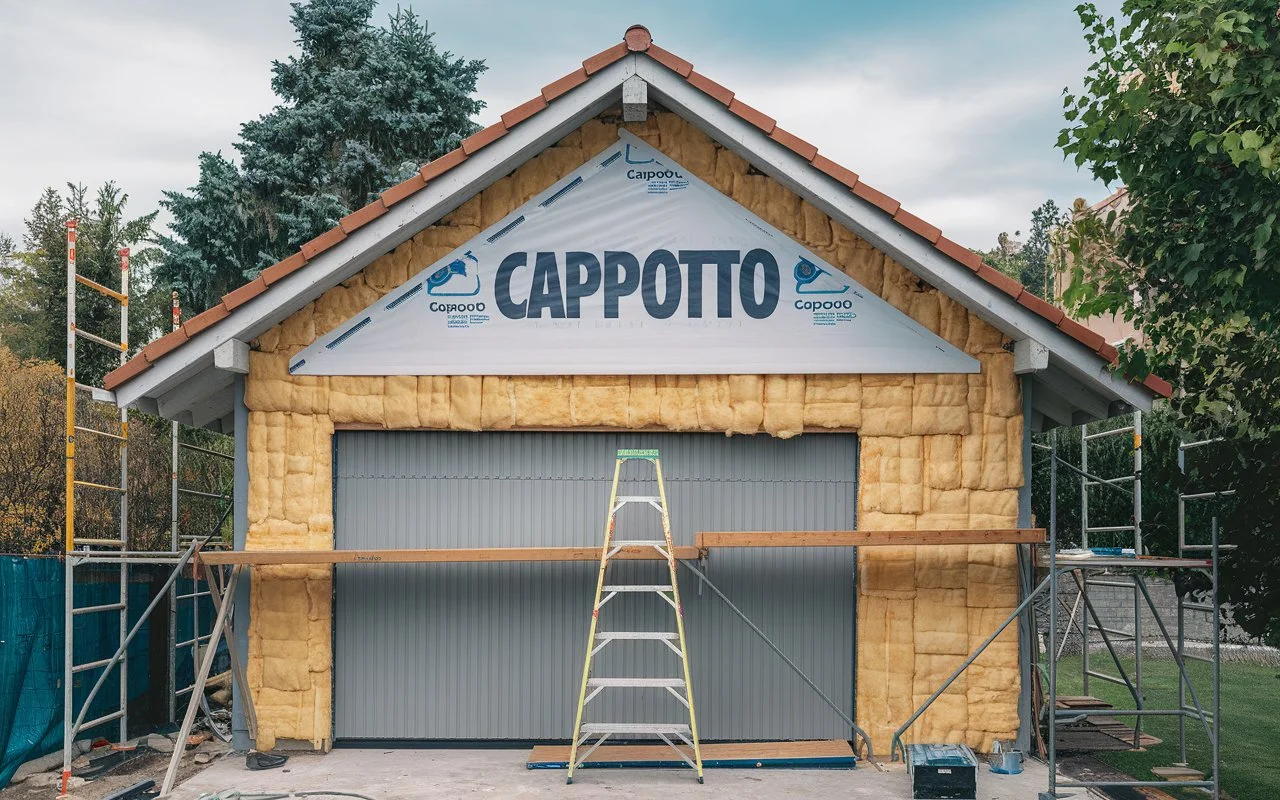The Superbonus 110% scheme has been a significant initiative in Italy, designed to encourage energy efficiency and sustainability in residential buildings. It provides substantial tax incentives for homeowners and developers who undertake specific renovations and improvements. Among these improvements, the installation of thermal insulation, commonly referred to as “cappotto,” has gained considerable attention. However, navigating the complexities of the Superbonus 110% scheme, especially concerning “nega autorizzazione” (denial of authorization) for the cappotto in garages, can be challenging. This article explores the implications of the Superbonus 110% program, focusing on the regulations, challenges, and potential solutions related to the denial of authorization for installing thermal insulation in garages.
Understanding the Superbonus 110% Scheme
Overview of the Superbonus 110%
Launched in July 2020, the Superbonus 110% scheme allows homeowners to claim a tax deduction of up to 110% on qualifying renovation expenses, effectively allowing them to receive more than what they spend. This initiative aims to reduce energy consumption, lower carbon emissions, and improve the overall energy efficiency of residential buildings across Italy. The key features of the scheme include:
- Eligibility: The Superbonus is available for existing residential buildings, including single-family homes and multi-unit dwellings.
- Qualifying Works: Eligible works include thermal insulation, replacement of heating systems, installation of solar panels, and improvements to building structures.
- Deduction Mechanism: The 110% tax deduction can be applied over five years or can be transferred to other entities (e.g., contractors) through a mechanism called “sconto in fattura” (invoice discount).
The Role of Thermal Insulation (Cappotto)
Thermal insulation is a crucial aspect of energy-efficient renovations. It helps reduce heat loss in winter and keeps homes cooler in summer, thereby decreasing the reliance on heating and cooling systems. The “cappotto” refers to external thermal insulation systems applied to building facades, which significantly improve energy performance.
Denial of Authorization: Understanding the Challenges
Reasons for Nega Autorizzazione
While the Superbonus 110% scheme aims to promote renovations, there are instances where local authorities may deny authorization for installing cappotto systems in garages. Common reasons for such denials include:
- Zoning Regulations: Local zoning laws may restrict certain modifications, especially if the garage is located in a protected area or if the proposed changes violate existing building codes.
- Structural Concerns: Authorities may express concerns about the structural integrity of the building if the proposed insulation significantly alters the building’s exterior or load-bearing elements.
- Aesthetic Considerations: In historical or aesthetically sensitive areas, authorities might deny requests to maintain the architectural integrity of the neighborhood.
- Lack of Documentation: Insufficient or incomplete documentation submitted with the application can lead to denials. This includes failure to provide detailed project plans, technical specifications, or compliance with energy efficiency standards.
- Non-Compliance with Energy Efficiency Standards: If the proposed cappotto does not meet national or regional energy efficiency guidelines, authorization may be denied.
Impact of Denial on Homeowners
Receiving a denial of authorization can be frustrating for homeowners who are keen to improve their properties’ energy efficiency. The implications of a denied request include:
- Financial Setbacks: Homeowners may incur costs for the planning and application process without reaping the benefits of the Superbonus scheme. Additionally, they may miss out on potential savings on energy bills.
- Project Delays: Denials can result in significant delays in renovation projects, causing inconvenience and frustration for homeowners who have planned their renovations around the Superbonus timeline.
- Reduced Property Value: Failing to upgrade insulation may lead to increased energy costs, which can reduce the property’s overall value and marketability.
Navigating the Nega Autorizzazione Process
Steps to Take After a Denial
When faced with a denial of authorization for cappotto installation in a garage, homeowners should take proactive steps to address the situation:
- Review the Denial Notice: Carefully read the reasons for denial provided by local authorities. Understanding the specific issues can help in addressing them effectively.
- Consult with Professionals: Engaging with architects, engineers, or specialized consultants can provide valuable insights into the denial. Professionals can help identify potential solutions and guide homeowners through the appeals process.
- Prepare a Comprehensive Appeal: If the denial is deemed unjustified, homeowners can submit an appeal. This should include:
- Detailed Project Plans: Providing revised plans that address the concerns raised in the denial.
- Technical Documentation: Including evidence that demonstrates compliance with energy efficiency standards and structural integrity.
- Expert Opinions: Adding letters from qualified professionals that support the project’s feasibility and compliance.
- Engage with Local Authorities: Open communication with local authorities can be beneficial. Homeowners should seek meetings or discussions to understand the specific concerns and explore potential modifications to the proposal.
Common Solutions to Overcome Denial
To improve the chances of receiving authorization, homeowners can consider the following solutions:
- Modifying the Project: Adjusting the design or materials used for the cappotto installation may align the project better with local regulations and address concerns.
- Incorporating Aesthetic Elements: In areas where aesthetics are a concern, homeowners may consider using materials or designs that blend better with the existing architecture, thus satisfying local guidelines.
- Ensuring Compliance with Regulations: Working closely with professionals to ensure that the project complies with all relevant building codes and energy efficiency standards is critical for gaining approval.
- Engaging Local Advocacy Groups: In cases where community interests are involved, collaborating with local advocacy groups can help gather support for the project, potentially influencing local authorities’ decisions.
Case Studies: Success Stories and Lessons Learned
Case Study 1: Modifying Design for Approval
In a residential neighborhood in Milan, a homeowner faced denial for their proposed cappotto installation in the garage due to aesthetic concerns. The local authority argued that the proposed design did not align with the architectural style of the neighborhood.
To overcome this challenge, the homeowner collaborated with an architect to redesign the cappotto to include a facade that mimicked the existing building materials and colors. After resubmitting the application with the revised plans, the homeowner received authorization to proceed with the project.
Lesson Learned: Adapting design elements to align with local aesthetics can significantly improve the chances of approval.
Case Study 2: Engaging Professionals Early in the Process
A family in Florence sought to install thermal insulation in their garage under the Superbonus 110% scheme but faced denial due to structural concerns about the existing garage foundation.
Before reapplying, they engaged an engineering firm specializing in energy efficiency renovations. The engineers assessed the foundation and proposed necessary reinforcements, providing a comprehensive report that addressed the authority’s concerns. With this documentation, the family successfully obtained the required authorization.
Lesson Learned: Involving professionals early in the planning process can help identify potential issues and create a stronger application.
The Future of Cappotto Installation Under the Superbonus 110%
Evolving Regulations and Standards
As Italy continues to prioritize energy efficiency and sustainability, regulations surrounding the Superbonus 110% scheme are likely to evolve. Homeowners should stay informed about any changes that may affect their renovation projects. It is essential to monitor updates from the Italian government and local authorities to ensure compliance with new standards.
The Role of Digital Solutions
Digital technology is playing an increasingly significant role in the renovation sector. Online platforms and software tools that simplify the application process and provide guidance on compliance can be beneficial for homeowners. These tools can help streamline documentation, enhance communication with local authorities, and improve project management efficiency.
Increasing Awareness and Education
As awareness of the Superbonus 110% scheme grows, education about the requirements and processes surrounding cappotto installations will become crucial. Workshops, seminars, and online resources provided by local authorities or industry organizations can empower homeowners with the knowledge needed to navigate potential challenges effectively.
Conclusion
The “nega autorizzazione” for cappotto installation in garages under the Superbonus 110% scheme presents both challenges and opportunities for homeowners in Italy. While denials can be frustrating, understanding the reasons behind them and taking proactive steps can lead to successful appeals and project approvals. By engaging with professionals, modifying designs, and staying informed about regulations, homeowners can maximize their chances of benefiting from the Superbonus scheme and contributing to a more energy-efficient future.
As the demand for energy-efficient renovations continues to rise, M2 Craponne Préviosion stands at the forefront of the logistics industry, driven by a commitment to excellence and innovation.




